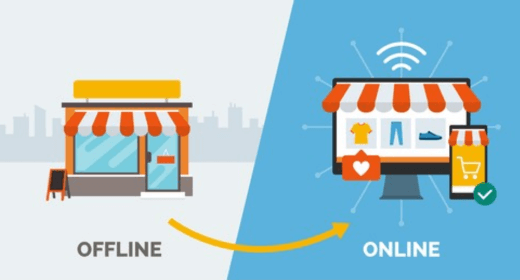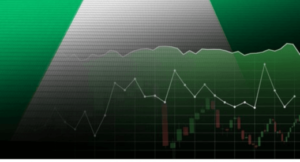For decades, traditional marketing was the cornerstone of business growth and brand recognition. Companies relied on billboards, television commercials, print ads, and direct mail to capture the attention of consumers. These methods, while effective in their time, built some of the most iconic brands of the 20th century. Coca-Cola’s jingles on the radio, Nike’s powerful TV ads, and McDonald’s print campaigns created not just awareness but cultural phenomena. However, as the 21st century unfolded, a seismic shift began to redefine the landscape.
The Historical Significance of Traditional Marketing
Traditional marketing methods were effective because they reached consumers where they were—in their living rooms, on their commutes, and through their favorite magazines. The metrics of success revolved around reach and frequency. The cost of a 30-second Super Bowl commercial, for example, grew to $7 million in 2023 because brands understood the unparalleled reach of the event. However, while these strategies delivered broad exposure, they often lacked precise targeting and measurable ROI.
In an era where consumer data was limited, traditional marketing’s one-size-fits-all approach was a natural fit. It worked because there were fewer channels competing for consumer attention. But the limitations of this approach have become glaringly obvious as technological advancements have dramatically reshaped consumer behavior.
The Rise of Digital Marketing: A Disruptive Force
Digital marketing emerged as a direct response to the inefficiencies of traditional methods. With the advent of the internet and the proliferation of smartphones, consumers began shifting their attention online. Platforms like Google, Facebook, and YouTube introduced a new era where brands could engage with their audiences in real time, delivering highly targeted and measurable campaigns.
As of 2024, digital ad spending is projected to surpass $600 billion globally, accounting for nearly 70% of total ad spend. This surge is driven by the ability of digital platforms to offer unparalleled precision. A brand can now target a 35-year-old working mom in Lagos who loves yoga and shops online for organic skincare products. Traditional marketing simply cannot compete with this level of specificity.
Moreover, digital marketing has democratized the playing field. Small businesses with modest budgets can now compete with industry giants. A well-optimized Google Ads campaign or a viral TikTok video can achieve what was once only possible with multi-million-dollar TV spots.
Key Technological Advancements Reshaping Consumer Behavior
Several technological advancements have catalyzed this shift, fundamentally altering how consumers interact with brands:
- Artificial Intelligence (AI) and Machine Learning: AI-powered algorithms now personalize user experiences. Platforms like Amazon and Netflix use AI to recommend products and content, making marketing efforts hyper-relevant.
- Social Media Platforms: With over 4.9 billion social media users worldwide, platforms like Instagram, TikTok, and LinkedIn have become essential for brands to build direct relationships with consumers. These platforms thrive on engagement metrics, enabling businesses to pivot strategies based on real-time feedback.
- Mobile Technology: The smartphone penetration rate reached 86% globally in 2023. This has made mobile-first strategies critical, with consumers spending an average of 3 hours and 23 minutes per day on their devices.
- Big Data Analytics: Businesses now have access to vast amounts of consumer data. Tools like Google Analytics, CRM platforms, and customer journey mapping software allow for detailed insights into purchasing behaviors, enabling marketers to optimize campaigns with precision.
- Augmented Reality (AR) and Virtual Reality (VR): AR and VR are revolutionizing experiential marketing. IKEA’s AR app, for instance, lets users visualize furniture in their homes before making a purchase, bridging the gap between traditional in-store experiences and digital convenience.
The Crossroads for Businesses
Businesses now find themselves at a critical juncture. Clinging to traditional marketing methods without integrating digital strategies is akin to navigating the modern world with a map instead of GPS. While traditional methods still have their place, such as in brand-building or reaching certain demographics, relying solely on them is a risk many businesses cannot afford.
The consequences of ignoring digital marketing are severe. Consider Kodak, a company that dominated the photography market but failed to adapt to the digital revolution. Similarly, brands that fail to shift budgets and strategies to meet consumers where they are risk becoming irrelevant.
Assessing Your Marketing Strategies
As we stand at this crossroads, it’s time for businesses to take a hard look at their marketing strategies. Are you investing in platforms that align with modern consumer behavior? Are your campaigns measurable, targeted, and adaptable?
Start by conducting a marketing audit. Analyze your current spend and evaluate the ROI of each channel. Identify opportunities to integrate digital strategies that complement traditional efforts. Partner with experts who can guide your digital transformation, ensuring your business remains competitive in this rapidly evolving landscape.
The future of marketing isn’t about choosing between traditional and digital; it’s about leveraging both strategically. However, businesses that fail to act now may find themselves left behind in a world where digital marketing is no longer optional but essential.



